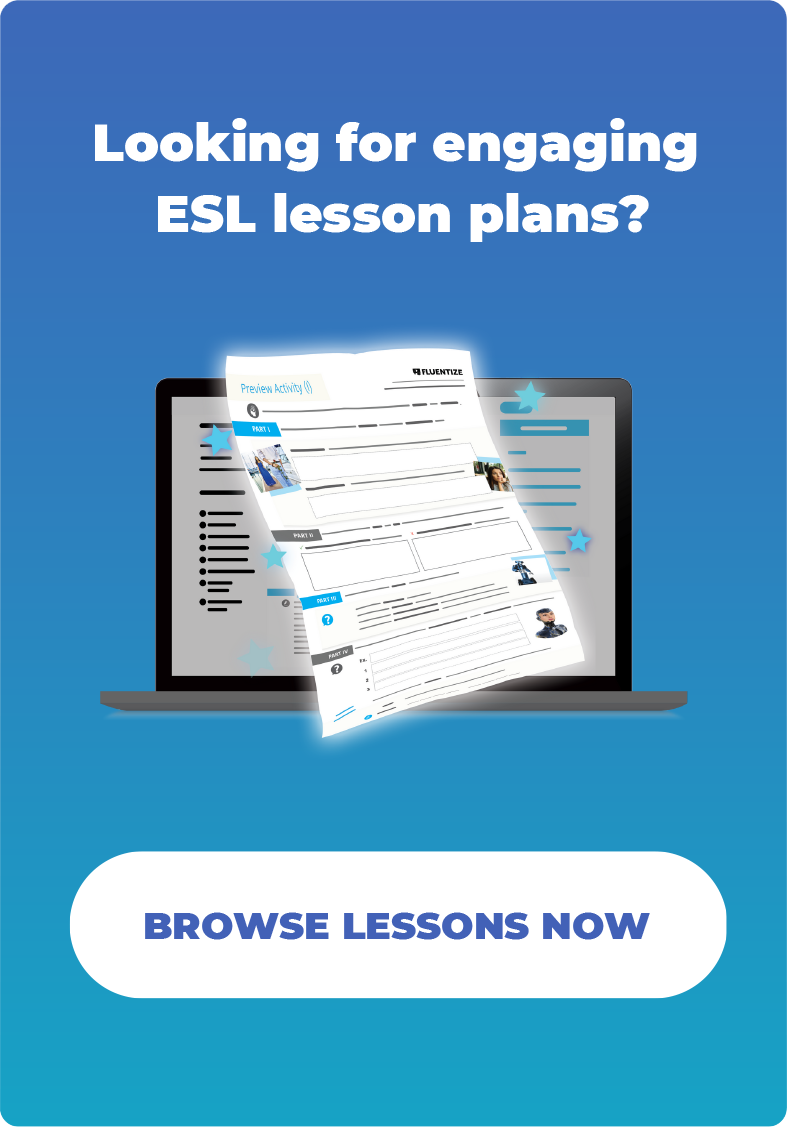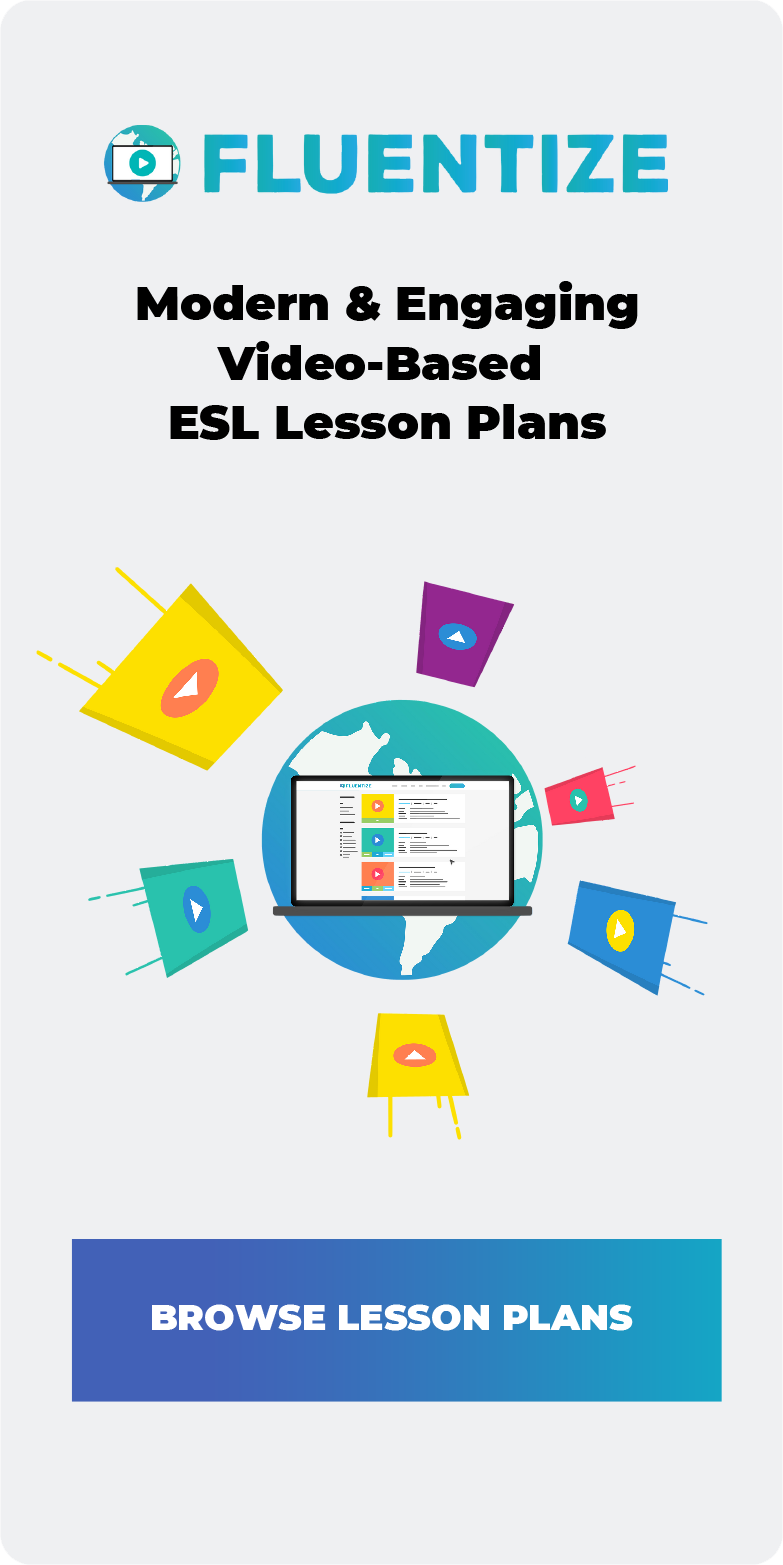When I think about how to motivate ESL students and get them to practice English beyond the classroom, one private student of mine from Brazil comes to mind. She’s 65, lives in Rio de Janeiro, and we meet online twice a week. She’s really lovely, she’s been having lessons with me for over 5 years – I know, the commitment!
She’s really motivated but doesn’t get many chances to use English outside of our lessons. To help, I set up a simple routine for her with listening and speaking tasks using WhatsApp. Each week, she records a quick summary of an article she’s read (which she chooses herself!), and we discuss it as a warm-up in the subsequent class. She also sends me voice messages ( around 1 minute long) about her day. Simple, right? This approach has boosted her confidence and language skills. Why not try something similar with your students?
How to Motivate ESL Students by Encouraging Learner Autonomy
This example shows the importance of learner autonomy—something we’ve all heard of. In short, it’s about students taking charge of their learning by setting goals, choosing activities, and reflecting on their progress. It helps them manage their learning even when they’re not in class.
So how can we, as teachers, encourage this autonomy? How can we motivate our ESL students to practice English on their own? Don’t worry, we’ve got some strategies for you.
Here are 8 ways how to motivate ESL students and encourage them to use English outside class by fostering learner autonomy.
1. Encourage your learners to set learning goals and self-assess
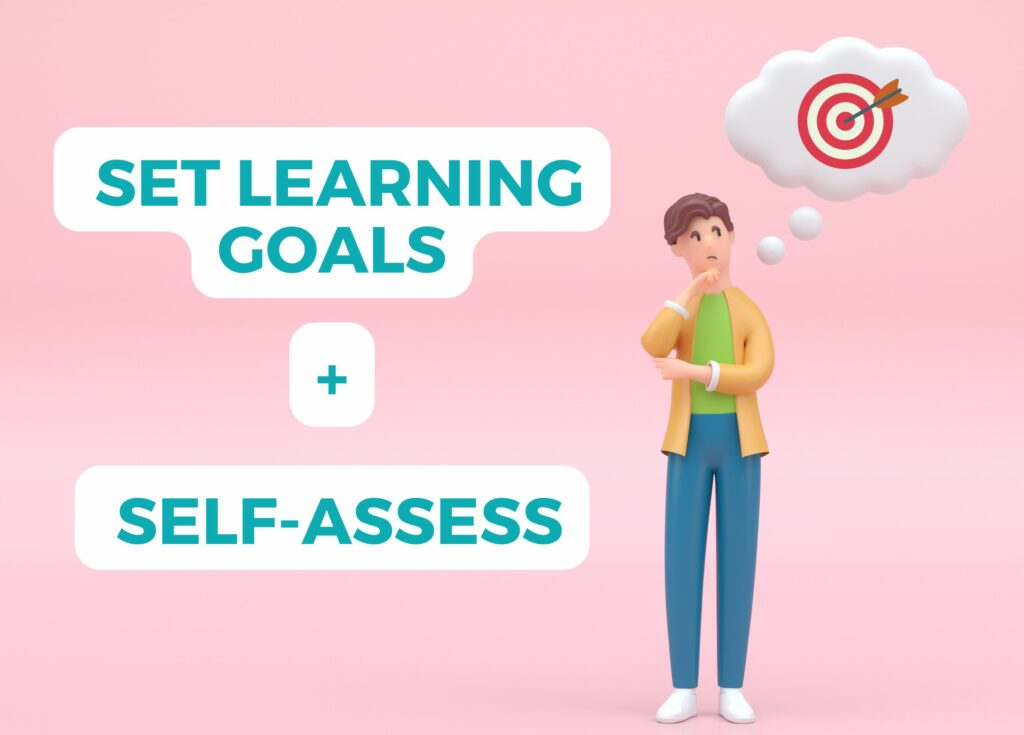
The first step is helping students set their own goals. Some may want to improve their speaking to travel, while others might aim for academic skills. Without clear goals, it’s easy to lose motivation. Encourage them to ask questions like, “why am I learning English?” or “what skills do I need to work on?”
Once their goals are set, self-assessment becomes key. Regularly ask students to reflect on their progress with questions like, “what did I learn this week?” or “what challenges did I face?” The more they reflect, the more engaged they become, turning learning into an active process.
2. Create a listening & speaking routine on WhatsApp, Slack, etc.
In my lessons, WhatsApp plays a big role in extending learning outside the classroom. It’s simple for students to share voice recordings, articles, and reflections, making daily practice easy and manageable. You could have students start by sending short audio messages about their day or reacting to a podcast.
The aim is to create a low-pressure routine where students use English frequently. Also, incorporating resources such as ours at Fluentize, with our engaging video-based lessons, adds a super dynamic element. After watching a video, students can summarise it on WhatsApp or discuss it with a classmate to make the learning interactive. Using the right resources effectively is a really powerful way how to motivate ESL students.
3. Incorporate peer collaboration and language exchange
Another way to boost practice is through peer collaboration. Why work alone when students can partner up?

Set up language exchange pairs so they can meet virtually, exchange voice notes, or discuss articles they’ve read—like my student does with me.
In an autonomy-focused classroom, peer collaboration is very important. Learners can provide feedback on pronunciation, grammar, or content, while building social bonds and accountability that keep them motivated. It’s a win-win plan!
4. Use of self-access resources
Students often ask, “How can I practise more at home?” Point them to self-access resources like graded readers and podcasts. But don’t just recommend resources—teach them how to use them effectively. Encourage students to pick one or 2 podcasts that interest them, reflect on what they learned, and apply new vocabulary in conversations.
Self-access resources promote autonomy by giving students control over their learning. The key is helping them build the habit of using these tools regularly and with purpose.
5. Develop writing habits through journaling

One simple way to encourage consistent writing is through journaling or blogging. A weekly diary in English lets students reflect on their weeks, express thoughts, and practice vocabulary.
But why stop there? Encourage them to start a blog or join an online community where they can write about topics they enjoy. It could be reviewing a book, sharing a travel story, or reflecting on a lesson. Writing for an audience (real or imagined) gives their work purpose beyond just getting a grade. It helps them engage more deeply with the language and feel more connected to it.
6. Use reflection and self-correction techniques
Reflecting on mistakes is key to growth. When students can spot their own errors, they become less dependent on the teacher. Ask questions like, “What mistakes did I make today? How can I avoid them next time?” This builds independence and resilience, helping students take ownership of their learning. Plus, it nurtures a growth mindset—where mistakes are seen as chances to improve. This is a very effective technique if you are looking for ways how to motivate ESL students. The feeling of fixing a mistake and getting it right is very motivating.
7. Encourage reading for pleasure
Reading in English doesn’t have to be intimidating! Once students find material that interests them, it becomes enjoyable and helps with language learning. Start by guiding them to texts that match their level but are fun to read—whether it’s an article, a short story, or even a comic. Students could even form mini reading circles, discussing what they read and sharing their thoughts. This way, reading blends naturally with writing and speaking practice.
8. Create opportunities for self-directed learning in class
One key to fostering learner autonomy is giving students more control over their own learning. Instead of sticking to teacher-led activities, well, how about letting students choose tasks that match their interests? For instance, they could pick which vocabulary to focus on or choose the format of a writing assignment—whether it’s an essay, blog post, or even a story.
When students have a say, they take more ownership of the process. Self-directed learning can be built into the classroom by offering choices and setting targets with their input. This makes learning more meaningful and, by the way, helps them practice English in ways that matter to them. When you give ESL students the chance to choose their own path, motivating them becomes a lot easier.
Why staying motivated helps you learn better
We all know that motivation plays a huge role in learner autonomy. Without it, students are less likely to take initiative—even with plenty of resources. Motivation can be both intrinsic (personal satisfaction) and extrinsic (grades, praise, or career goals).

As teachers, it’s important to nurture both types. Create a safe space where students feel comfortable taking risks and learning from mistakes. Building a growth mindset helps them see challenges as chances to improve.
For instance, when ESL students see language learning as valuable—whether for travel, work, or personal growth—they’re more motivated to engage with it outside of class.
And don’t forget, giving them a say in what and how they learn also boosts their intrinsic motivation. Offering meaningful feedback that highlights their progress and areas to improve will further inspire them to keep practising.
How to Motivate ESL students: Turn Students into Independent Learners
When you’re thinking about how to motivate ESL students, one big goal should be helping them become more independent learners. Now, here’s where the teacher’s role gets interesting—our job is to shift the spotlight to the students, letting them take the wheel of their own learning journey. Sounds risky? Not really. In fact, it’s empowering. Our role is to create an environment where students feel confident making decisions and taking responsibility for their progress. Think of us as the GPS, guiding the way but letting them choose the route.
So, how do we create this magical, independent learning environment? Well, here are a few ideas:
1. Clarifying learning objectives:
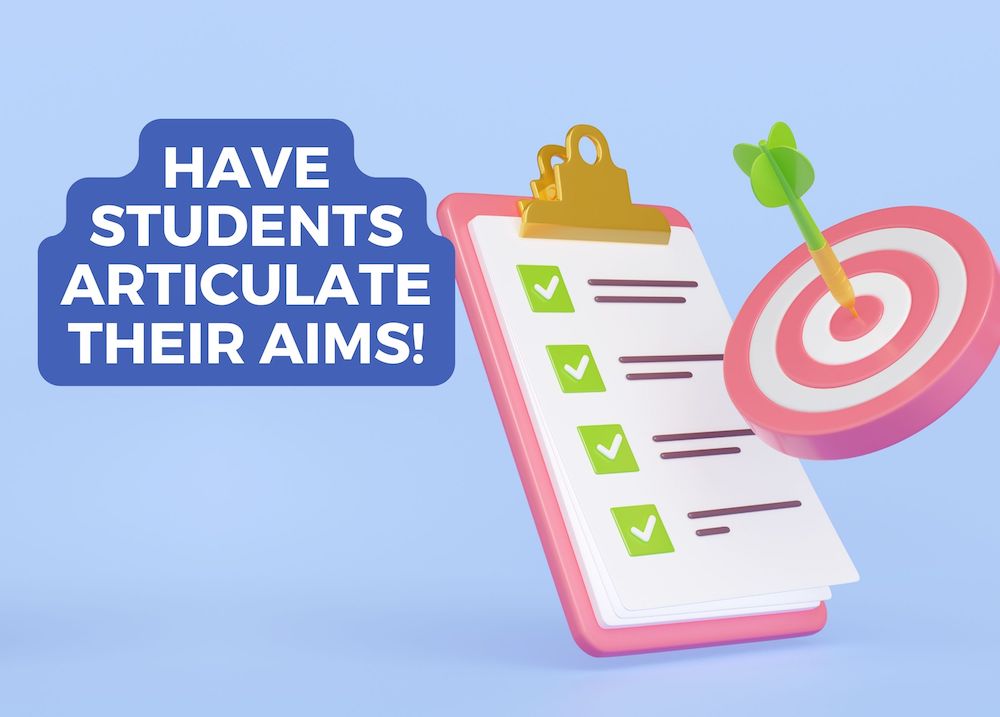
First, we’ve got to help students get clear on their goals. Why English and not, say, Spanish? Is it for work, travel, or a fancy certificate to hang on the wall? Helping students figure out the “why” gives them a sense of direction, and when they know where they’re headed, they tend to stay more engaged. Plus, it helps us tailor lessons to fit their needs.
- Why are you learning English instead of another language like Spanish or French?
- What do you aim to achieve once you complete the course or obtain a language certificate?
- Do you need English for work, travel, or academic purposes?
- Which skills—listening, speaking, reading, writing—are you most focused on improving?
Helping learners articulate their goals gives them a sense of direction, making them more motivated and engaged in their learning process.
2. Emphasizing self-assessment
Next, it’s time to get them reflecting. Regular self-assessment isn’t just about patting themselves on the back. It’s about spotting strengths, weaknesses, and making tweaks along the way. Think of it like tuning a guitar—fine adjustments lead to better results. By encouraging them to check in on their progress, we help students take ownership of their learning and make improvements before the final exam rolls around.
3. Developing language proficiency
Now, here’s the thing—while we’re all for independence, we can’t forget the main goal: improving language skills. Autonomy doesn’t mean waving goodbye to structured learning. It’s more about finding that sweet spot where students are free to explore while still developing solid language foundations. So yes, keep pushing for independence, but make sure they’re still mastering those pesky grammar rules! After all, knowing how to motivate ESL students means balancing freedom with guidance to keep them engaged and progressing.
Adapting textbook activities:
And finally, how about mixing up your coursebook exercises? Instead of the usual memorize-and-repeat, why not get students to create their own tasks? Let them come up with new questions, discussion prompts, or even mini-projects. This helps them think critically and also makes the learning process more personal and fun. Plus, everyone enjoys having a bit of creative control!
How to Motivate ESL Students by Promoting Autonomous Learning
If you’re looking for ways how to motivate ESL students and get them using English outside the classroom, you should promote autonomous learning. Here are 10 creative activities to help your students take control of their learning. These ideas work for both extroverts and introverts, encouraging deeper engagement and reflection.
Activity 1: Collaborative podcast project

- Choose a podcast on a topic of your interest.
- Create a 5-minute summary in your own words and record yourself summarizing the podcast.
- Share your recording with a classmate or your teacher, and they will create two follow-up questions.
- Respond to these questions via audio or text and discuss how the podcast relates to a real-life experience you’ve had.
- Add the recording and reflection to your portfolio.
Our suggested podcasts for English learners:
Activity 2: Visual vocabulary journal
- Select 10 new vocabulary words each week from your reading or listening materials.
- For each word, create or find an image that represents its meaning.
- Write a sentence using the word in context, and record yourself explaining why you chose the image and how it relates to the word.
- Share your vocabulary journal with peers in a virtual gallery (e.g., Google Drive or Padlet), and provide feedback on each other’s visual interpretations.
- Reflect on how visual connections helped you retain vocabulary, and add the reflection to your portfolio.
Suggested resource: Check out our Fluentize lessons—they’re packed with engaging videos and rich vocabulary, perfect for adding new words to your learners’ visual journal.
Activity 3: Silent conversation
- Have a “silent conversation” with a classmate using a shared Google doc or paper, instead of talking.
- Write your thoughts on a given topic, and ask follow-up questions or comment on your classmate’s points in writing.
- Summarize the key points from the written conversation and reflect on how this format helped you organize your ideas more clearly than spoken discussion.
- Share the conversation and reflection in your portfolio.
Activity 4: Personal reflection vlog
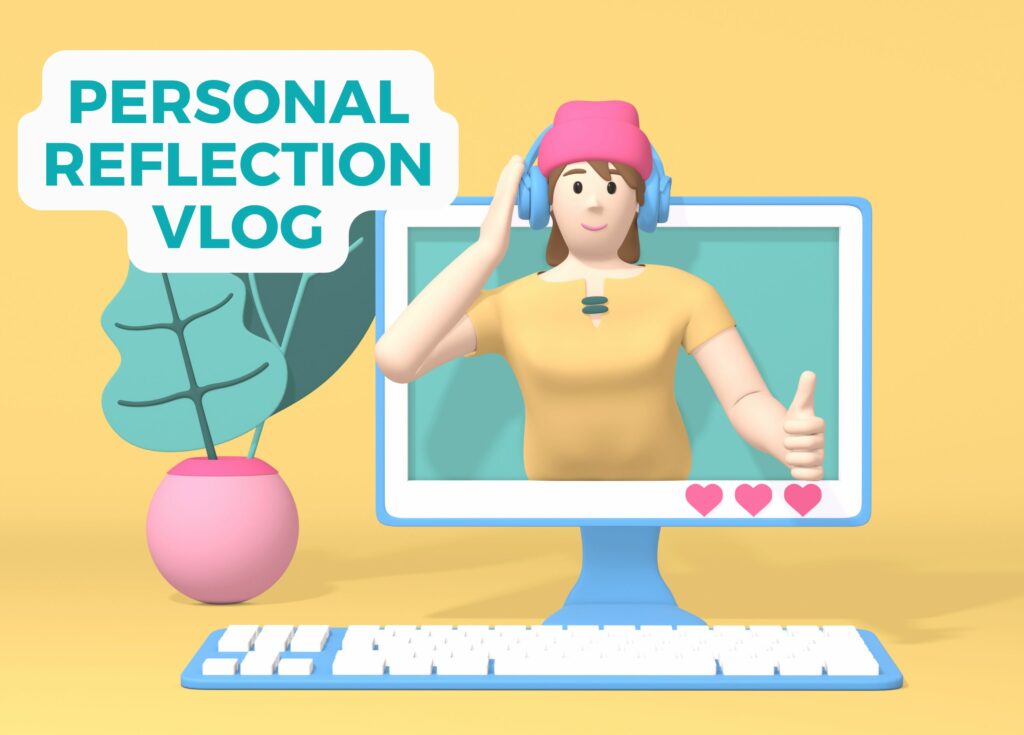
- Read an article or short story. Instead of writing a reflection, create a vlog (video blog) where you summarize the key points and express your thoughts.
- Discuss how the article connects to a personal experience or has changed your perspective.
- Upload your vlog to a shared platform (Google Drive or a private YouTube channel) and invite feedback from classmates.
- Reflect on how recording your thoughts helped you engage with the material, and add this reflection to your portfolio.
Suggested article resources:
- Breaking News English: Current events with reading and listening options for different levels.
- Lingua Reads: Simplified news articles for English learners.
- The Atlantic’s Global Section: More advanced articles for learners wanting to engage with global issues.
Activity 5: Virtual museum tour with a twist
- Take a virtual tour of a museum that interests you (many museums offer online tours).
- Choose an exhibit or artwork that resonates with you and imagine you’re the curator.
- Create a presentation where you explain the significance of the piece, how it connects to a current issue, and what you’d include to complement it.
- Record your presentation and share it with the class. Reflect on how engaging with art in English enhanced both your language and critical thinking skills.
- Add the presentation and reflection to your portfolio.
Suggested museum tours:
- The Louvre Virtual Tour
- The British Museum Virtual Tour
- Smithsonian National Museum of Natural History Virtual Tour
Activity 6: Debate in writing
- Choose a debate topic and hold the debate in writing using Google Docs or Slack.
- Each student writes their opening argument and responds to the opposing team’s points, using articles or studies to support their arguments.
- Review the written responses and reflect on how writing helped or challenged your ability to present persuasive arguments.
- Add your argument and reflection to your portfolio, noting improvements in structuring your ideas.
Activity 7: Online role-playing scenario

- Choose a real-life scenario (e.g., renting an apartment, negotiating a contract, or planning a trip).
- Create a role-playing dialogue with a classmate using a chat platform like Slack, taking turns responding in character.
- After the role-play, switch roles and replay the scenario from the opposite perspective.
- Reflect on how the role-play helped you practice critical thinking and negotiation in English. Include the dialogue and reflection in your portfolio.
On Fluentize, we have plenty of lessons that feature role-play exercises that get students using English in real-life scenarios! Incorporating engaging role plays is a great strategy for how to motivate ESL students, as it builds confidence and makes language learning more interactive and practical.
Suggested Fluentize Lessons Featuring Role-play Activations:
- Assisting Customers At The Store (A1)
- Ordering At A Restaurant: Ft. Brad Pitt & Jimmy Fallon (A1)
- Feeling Sick? Treat Your Cold & Flu Symptoms (A2)
- Google Assistant: Making Reservations (A2)
- Good Boss or Bad Boss? The Defining Traits (B1 – B2)
- The Expert: IT Support Call (Comedy Sketch) (B1 – B2)
- The Art of Better Decision-Making (B2)
- Why Do Some People Have the Wanderlust Gene? (C1)
- Why Scrolling on Social Media is Addictive (C1)
Activity 8: Cultural exploration research project
- Research a country and create an interactive “travel guide” that includes cultural facts, phrases, images, and videos.
- Use a platform like Padlet or Google Slides to organize the guide and share it with your classmates.
- Reflect on how preparing the guide helped deepen your cultural understanding and improved your English skills.
- Add the guide and reflection to your portfolio.
Useful tools:
- Padlet: To create and share interactive cultural content.
- Google Slides: For creating presentations.
Activity 9: Autobiographical podcast
- Record a personal podcast where you share a life experience that had a big impact on you.
- Focus on storytelling techniques like pacing, tone, and imagery.
- Add sound effects or background music to make your story more engaging.
- Share the podcast with classmates and reflect on how auditory storytelling differed from writing. Add both the podcast and reflection to your portfolio.
Free podcasting tools on your phone:
- Anchor
- Audacity
- Soundtrap
Activity 10: Opinion infographic
- Instead of writing an essay, create an infographic to present your opinion on a social issue.
- Use images, quotes, and data to support your argument visually.
- Share your infographic in a virtual gallery (Google Drive or Padlet) and provide written explanations of your design and argument choices.
- Reflect on how organizing information visually helped you clarify your thoughts, and add both the infographic and reflection to your portfolio.
Tools to Create Infographics:
Activity 11: Creating a portfolio for independent learning
A great way to promote learner autonomy is by having students create a learning portfolio. It’s a space for students to track progress, set goals, and reflect on their learning. A portfolio helps them see their development over time, boosting both motivation and ownership of their learning journey.

“Ok, but what should they include in their portfolios?” you might be asking. Portfolios can include things like writing samples, audio recordings, and vocabulary logs. As teachers, we can guide students on how to organize their portfolios around their personal goals. This process makes them engage more critically with their work and think about what’s helping them improve.
Why portfolios promote autonomy
When students build their own portfolios, they take control of their learning. Choosing what to include encourages self-assessment and reflection. It’s also a great way for them to see their achievements, which can be a powerful motivator. Teachers can use portfolios to give feedback, helping students identify patterns, set new goals, and become more self-directed learners.
Tools for creating digital portfolios
- Google Drive
- Slack
- Seesaw
- Padlet
- Notion
Final Thoughts on How to Motivate ESL Students & Get Them Using English Outside Class
At the heart of learning any language is motivation, and the best way to sustain it is by helping students take ownership of their learning. Encouraging autonomy through goal-setting, peer collaboration, self-assessment, and real-world practice gives students the tools they need to keep improving—inside and outside the classroom.
Ultimately, how to motivate ESL students comes down to creating meaningful, engaging opportunities for them to interact with English in their daily lives. Whether it’s through journaling, voice messages, or language exchanges, the key is to make learning relevant and enjoyable. By fostering this independence, we not only help students become more confident language users but also lifelong learners.


